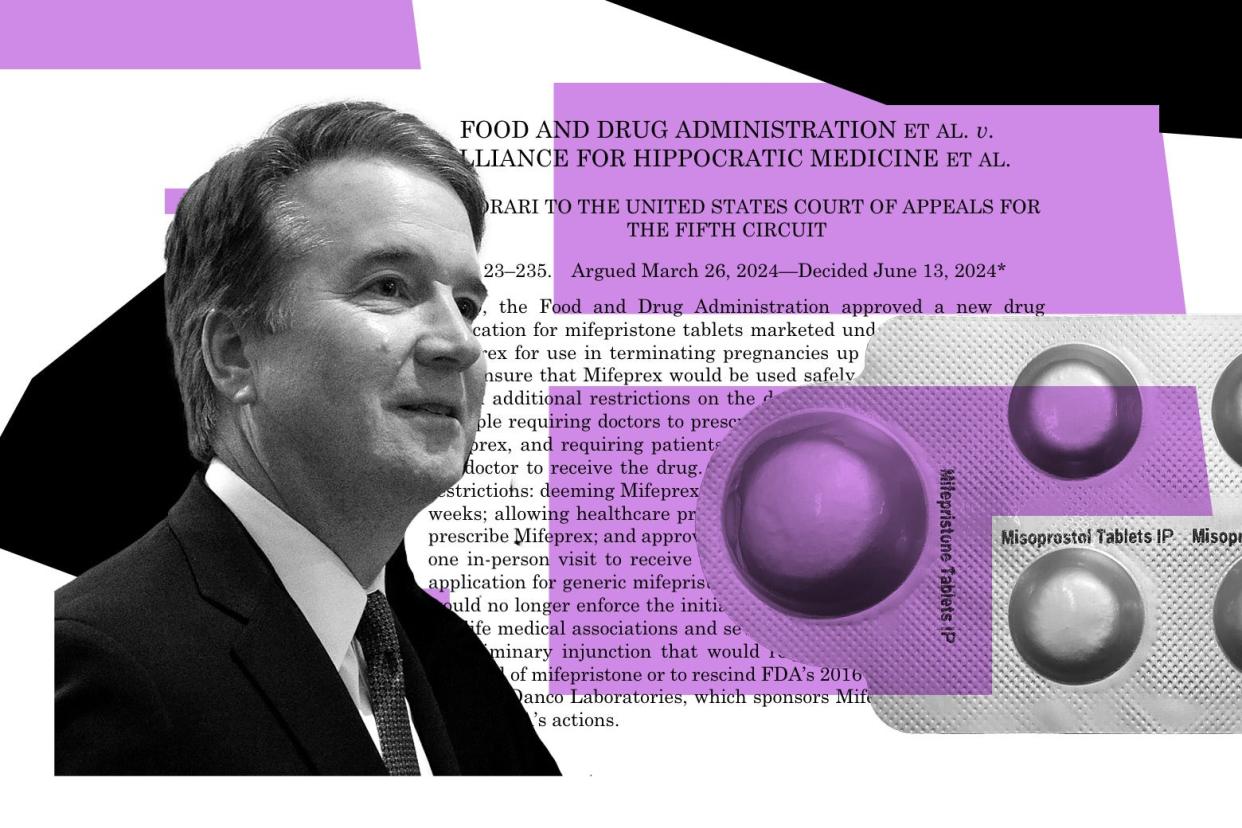The Supreme Court Voted 9-0 Against Abortion Pill Restrictions. It’s Not What It Seems.

This is part of Opinionpalooza, Slate’s coverage of the major decisions from the Supreme Court this June. Alongside Amicus, we kicked things off this year by explaining How Originalism Ate the Law. The best way to support our work is by joining Slate Plus. (If you are already a member, consider a donation or merch!)
On Thursday, the Supreme Court unanimously rejected an attempt to ban the abortion drug mifepristone—but as rare as it is for this court to unanimously agree on anything, the decision isn’t the progressive victory you might think.
In a 9–0 decision written by Justice Brett Kavanaugh, the court concluded that the plaintiffs in FDA v. Alliance for Hippocratic Medicine lacked standing to sue—in other words, that they hadn’t convincingly proven that they were being harmed. “The plaintiffs have sincere legal, moral, ideological, and policy objections to elective abortion and to FDA’s relaxed regulation of mifepristone,” wrote Kavanaugh. “But under Article III of the Constitution, those kinds of objections alone do not establish a justiciable case or controversy in federal court.”
However, Kavanaugh also wrote that “it is not clear that no one else would have standing to challenge the FDA’s relaxed regulation of mifepristone.”
So for now, mifepristone is safe and will continue to be available for use. However, the justices essentially opened the door, nice and wide, for someone else to step in and try to eliminate access to mifepristone.
During oral arguments, the conservative justices even laid out a potential legal argument for a new plaintiff to use—the Comstock Act of 1873. That law outlaws the mailing of “any drug or medicine or any article whatever for causing unlawful abortion,” but the government hasn’t enforced it, considering it vastly outdated. However, the Supreme Court’s conservative justices feel differently. “It’s not some obscure subsection of a complicated, obscure law. They knew about it. Everybody in this field knew about it,” Justice Samuel Alito argued back in March.
Still, Alito and his fellow conservative justices simply could not ignore the gaping holes in FDA v. Alliance for Hippocratic Medicine. For starters, it came to SCOTUS from the U.S. Court of Appeals for the 5th Circuit, a notoriously MAGA bench—six of its judges were appointed by the Trump administration—that “so consistently shovels its worst constitutional garbage upward that the higher court conservatives are often forced to reluctantly lob it back,” as Dahlia Lithwick and Mark Joseph Stern put it.
District Judge Matthew Kacsmaryk heard the case originally after it was shopped directly to his courtroom, and he initially tried to implement a nationwide ban on mifepristone last year. The Supreme Court ultimately froze his decision until they could hear FDA v. Alliance for Hippocratic Medicine.
The Alliance for Hippocratic Medicine was representing a handful of doctors who don’t actually prescribe mifepristone. Yet, they argued that they could some day receive a patient who had previously been prescribed mifepristone by a different doctor and was now experiencing complications. These doctors would be forced to treat this patient and thereby be complicit in abortion, according to this hypothetical approach to standing.
Justice Ketanji Brown Jackson during oral arguments noted that the case reflected a “mismatch” between the harms alleged and the remedy plaintiffs wanted: “They’re saying, ‘Because we object to having to be forced to participate in this procedure, we’re seeking an order preventing anyone from having access to these drugs at all.’ ”
This case should have been dismissed from the onset, since they were “merely speculating about the possibility of a future harm, which does not establish standing under Article 3 of the Constitution,” Lithwick and Stern wrote after oral arguments. “And that possibility really is quite remote, since mifepristone has been proved safe in more than 100 scientific studies.” However, the plaintiffs strategically brought the lawsuit in Amarillo, Texas, where it was guaranteed to draw Kascmaryk, who relied on a scientific study that was later withdrawn as junk science in his decision. Jessica Ellsworth, the attorney representing the maker of mifepristone, argued before the Supreme Court that Kascmaryk’s decision was based on “anonymous blog posts” and data that had “since been retracted for lack of scientific rigor and for misleading presentations of data.”
So to recap: This case, which shouldn’t have existed in the first place, was so full of holes that even the Supreme Court’s conservative justices’ hands were tied. They may have reluctantly banded together with their liberal counterparts to dismiss this mifepristone case—but that probably won’t be the case next time.
